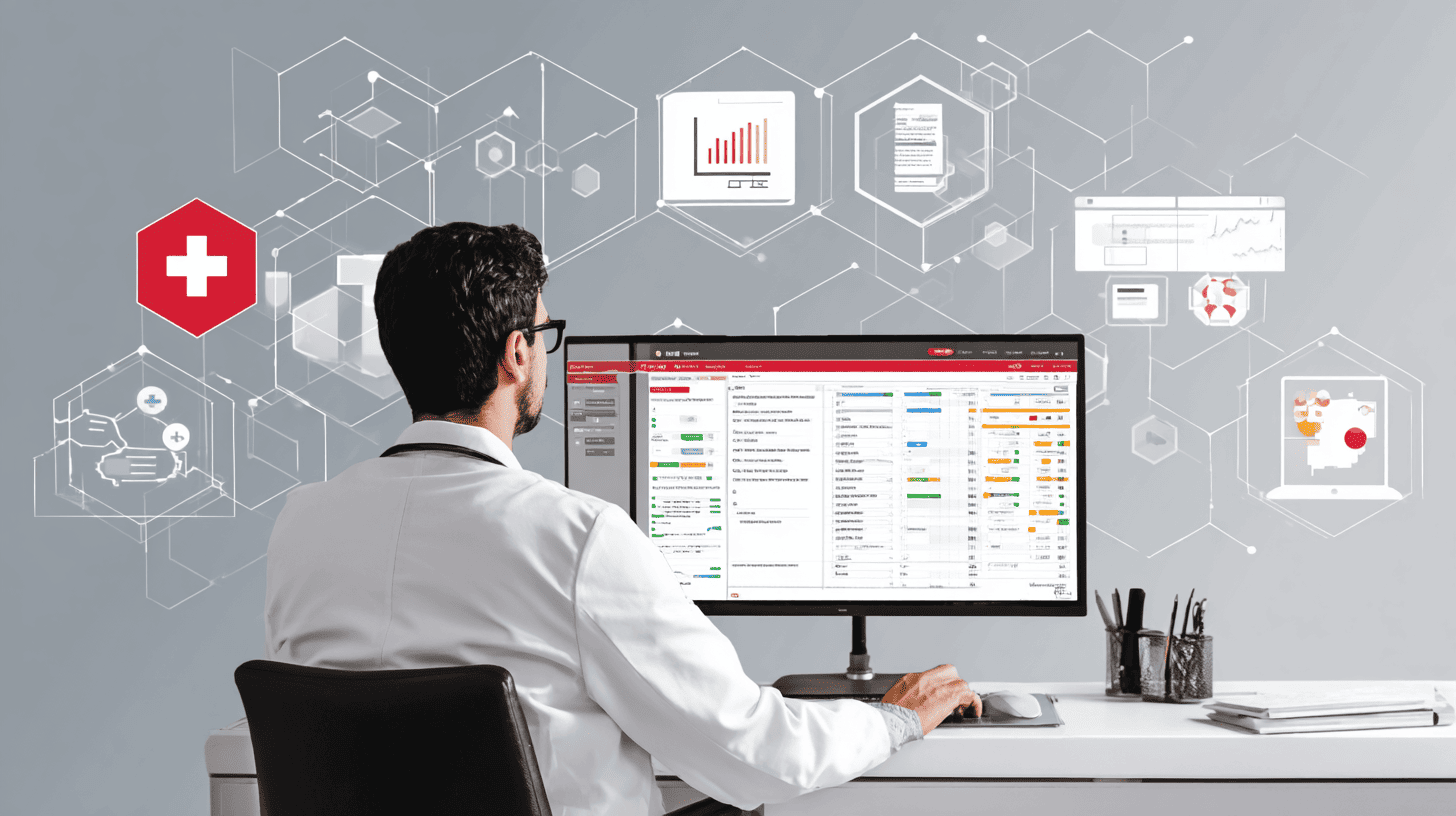Exploring Healthtech Software Development: What You Need to Know
Alexander Stasiak
Oct 13, 2025・10 min read
Table of Content
Introduction to Healthtech Software
Definition and Scope
Importance in Modern Healthcare
Key Features of Healthtech Software
Essential Components
Security and Compliance Considerations
Development Process Overview
Planning and Design
Testing and Deployment
Challenges in Healthtech Software
Regulatory Challenges
Data Privacy Concerns
Future Trends in Healthtech
Artificial Intelligence in Healthcare
Personalised Medicine Solutions
Let’s Build Smarter Together 🚀
At Startup House, we turn ideas into scalable digital products. 👇
Most healthtech projects fail to deliver on time or within budget. You’ve probably seen how frustrating it is when software that should improve care ends up causing more headaches. Understanding the key steps in healthtech software development services can save you time and money while making a real difference. Let’s break down what you need to know before diving in.
Introduction to Healthtech Software
Healthtech software is transforming the way healthcare is delivered, but what exactly does it involve?
Case study: Doogie — Health & Wellness Platform
Discover how we designed and built a scalable wellness platform from concept to launch, empowering users to take control of their health.
Definition and Scope
At its core, healthtech software refers to digital solutions designed to improve healthcare delivery and management. Whether it's electronic health records or telemedicine apps, these tools aim to streamline processes. The scope is vast, covering everything from patient management systems to mobile health applications that you might use on your smartphone. It's not just about technology but also about integrating these solutions into everyday healthcare practices.
Importance in Modern Healthcare
Why does healthtech software matter so much today? Simply put, it helps improve access to care and enhances patient outcomes. With the ability to access medical records anytime, healthcare providers make quicker, more informed decisions. And let's be honest, when you're waiting for treatment, speed is everything. Moreover, digital tools empower patients, giving them control over their health data and treatment plans.
Key Features of Healthtech Software
Understanding the core features of healthtech can highlight its benefits and potential pitfalls.
Want a real-world example of healthtech innovation? Check out our case study: Simon Care – MVP for dementia care.
Essential Components
Every healthtech solution needs a few core components to function effectively. These include a user-friendly interface, data management capabilities, and interoperability with other systems. Imagine trying to navigate a complicated app when you're not feeling well. A simple interface ensures that both patients and providers can use the software without a hitch. Additionally, the ability to handle vast amounts of data securely is critical, especially when dealing with sensitive health information.
Security and Compliance Considerations
Security isn't just a nice-to-have; it's a must. With health data being incredibly sensitive, any breach can be disastrous. Compliance with regulations like HIPAA is vital to ensure data is kept private. But here's the catch: compliance requirements can vary greatly, so it's crucial to stay updated. This means regular audits and system updates are necessary to keep data safe and maintain trust.
Development Process Overview
Creating healthtech software isn't as straightforward as developing other applications. It requires a thorough understanding of both tech and healthcare.
Planning and Design
The first step in the development process is planning. A clear roadmap is essential, helping define what the software should achieve. During the design phase, it's important to focus on user needs. This includes creating wireframes and prototypes to test ideas before the actual build. The goal is to catch any issues early on, saving time and resources down the line.
Testing and Deployment
Once the design is set, testing becomes the focus. Rigorous testing ensures that the software works as intended and identifies any bugs. It's like a dress rehearsal before the big performance. After testing, deployment comes next, but this isn't the end. Continuous monitoring and updates are needed to keep the software relevant and efficient.
Challenges in Healthtech Software
Developing healthtech software comes with its set of challenges, particularly in the areas of regulation and privacy.
Regulatory Challenges
Navigating regulatory landscapes is often tricky. Regulations vary by region, making it challenging to ensure compliance across borders. For software developers, this means staying informed about changes in health laws and guidelines. Failure to comply can result in hefty fines or, worse, putting patient safety at risk.
Data Privacy Concerns
Privacy is another major hurdle. Patients need to trust that their data is secure. Encrypting data and using secure servers are just some of the measures to protect information. But here's a thought: even the best systems can be vulnerable. It's about being proactive and ready to address any threats swiftly.
Future Trends in Healthtech
The future of healthtech is bright, thanks to advancements in technology. Let's explore some trends making waves.
Artificial Intelligence in Healthcare
AI is not just a buzzword; it's a reality in healthcare. From predicting patient outcomes to personalising treatment plans, AI is revolutionising health services. Imagine an AI system that can analyse your medical history and suggest the best course of action. It's already happening, and it's making healthcare more efficient and tailored to individual needs.
Personalised Medicine Solutions
Personalised medicine is another exciting trend. By analysing genetic information, healthcare providers can offer treatments tailored to an individual's unique genetic makeup. This means more effective treatments and better outcomes. It's an exciting time, with technology enabling truly personalised care for the first time in history.
In summary, understanding healthtech software development is crucial for navigating its complexities and reaping its benefits. While challenges exist, the potential improvements in healthcare delivery make it a worthwhile endeavour.
Digital Transformation Strategy for Siemens Finance
Cloud-based platform for Siemens Financial Services in Poland


You may also like...

The Role of AI in Healthcare: Simplifying Complex Processes
AI is reshaping the healthcare industry, making complex processes simpler and faster. From early disease detection to personalised treatments, discover how AI is driving efficiency and improving patient outcomes.
Alexander Stasiak
Oct 24, 2025・10 min read

Understanding Custom Healthtech Software Development: A Clear Guide
When generic medical software slows you down, custom healthtech development can be the solution. Learn how tailored tools fit your unique workflow, improve patient care, and future-proof your healthcare operations.
Alexander Stasiak
Oct 08, 2025・8 min read

How AI Healthtech Companies Are Changing the Way We Look at Healthcare
AI healthtech companies are redefining how we experience healthcare. From accurate diagnoses to personalized treatments and streamlined hospital operations.
Alexander Stasiak
Oct 23, 2025・12 min read
Let’s build your next digital product — faster, safer, smarter.
Book a free consultationWork with a team trusted by top-tier companies.








